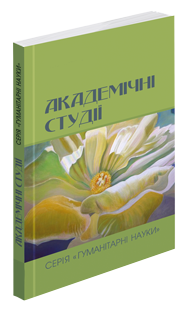Abstract
The article provides an analysis of the linguistic means used in English-language media discourse to represent Ukraine in the context of the full-scale war that russia started in 2022. The research is based on the leading English-language media, in particular The New York Times, and aims to study how lexical means and stylistic devices create an image of Ukraine that is fighting not only for its territorial integrity but also for democratic values in the global dimension. Language in media discourse performs not only an informative but also an ideological function, as it is a tool for constructing meanings, a means of influencing public opinion, and a mechanism for shaping social and political interpretations of events. Particular attention is paid to the publication “Lessons from World War II to Avoid World War III” written by the foreign ministers of seven countries, which highlights a shared position on the events in Ukraine. The authors use a variety of stylistic techniques, including connotative vocabulary (Ukraine has managed to repel the attack and liberate more than half of the newly occupied territory; Ukraine will never accept the legitimization of Russia’s occupation and annexation of any part of Ukraine’s territory), metaphors (divided the 21st century into before and after), historical allusions (references to the Molotov-Ribbentrop Pact and the destruction of Kyiv’s city center, the Holodomor, the deportation of Crimean Tatars), juxtaposition, quotes and maxims (Freedom must be armed better than tyranny), as well as official vocabulary (Ukrainian forces, Kyiv’s troops, Ukrainian soldiers, cease-fire, concessions, leverage, incursion). Taken together, these stylistic devices form the image of Ukraine as a courageous, morally resilient nation whose struggle is not only national but also symbolizes a broader fight for freedom, justice, and historical truth. In contrast, russia is linguistically portrayed as both a historical and contemporary aggressor, a destabilizing force (full-scale aggression, revanchism, impunity). This evaluative vocabulary constructs a clear ethical dichotomy between Ukraine and russia.
References
Досвід війни. Медійно-дискурсивний простір сучасної України : монографія / за ред. С. Романюк. Варшава : Totem.com.pl, 2024. 242 с. URL: https://wuw.pl/data/include/cms/Doswiadczenie_wojny_Romaniuk_Svitlana_2024.pdf (дата звернення: 12.05.2025).
Мартиненко В. В. Аналіз медіа-стратегії України в контексті українсько-російської війни в англомовних ЗМІ. Вчені записки Таврійського національного університету імені В. І. Вернадського. Серія: Філологія. Журналістика. 2024. Том 35 (74), № 5, ч. 2. С. 218–227. URL: https://philol.vernadskyjournals.in.ua/journals/2024/5_2024/part_2/35.pdf (дата звернення: 19.05.2025).
Матвійчук Т. П., Житар І. В. Мовні засоби впливу на читача у сучасних ЗМІ. Закарпатські студії. 2024. Вип. 36. С. 38–42. URL: http://zfs-journal.uzhnu.uz.ua/archive/36/8.pdf (дата звернення: 19.05.2025).
Lessons from World War II to Avoid World War III. The New York Times. May 8, 2025. URL: https://tinyurl.com/ythfpfk4 (дата звернення: 15.05.2025).
Putin Stops Far Short of Agreeing to a Cease-Fire, and Adds Tough Conditions. The New York Times. March 13, 2025. URL: https://www.nytimes.com/live/2025/03/13/world/russia-ukraine-moscow-war-kursk# (дата звернення: 15.05.2025).

This work is licensed under a Creative Commons Attribution 4.0 International License.

